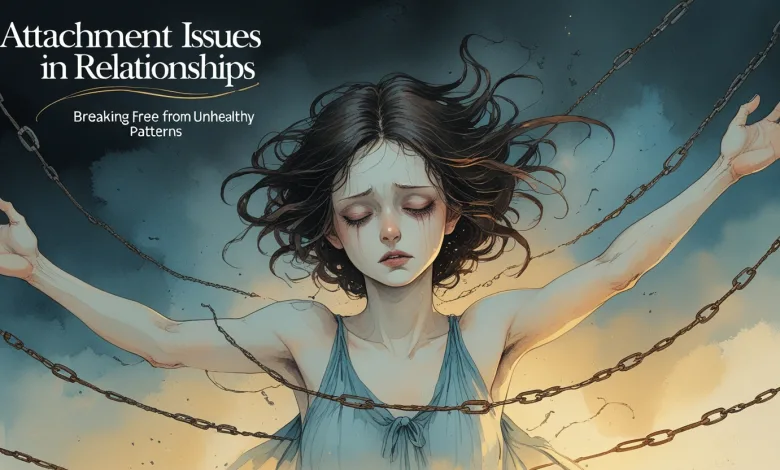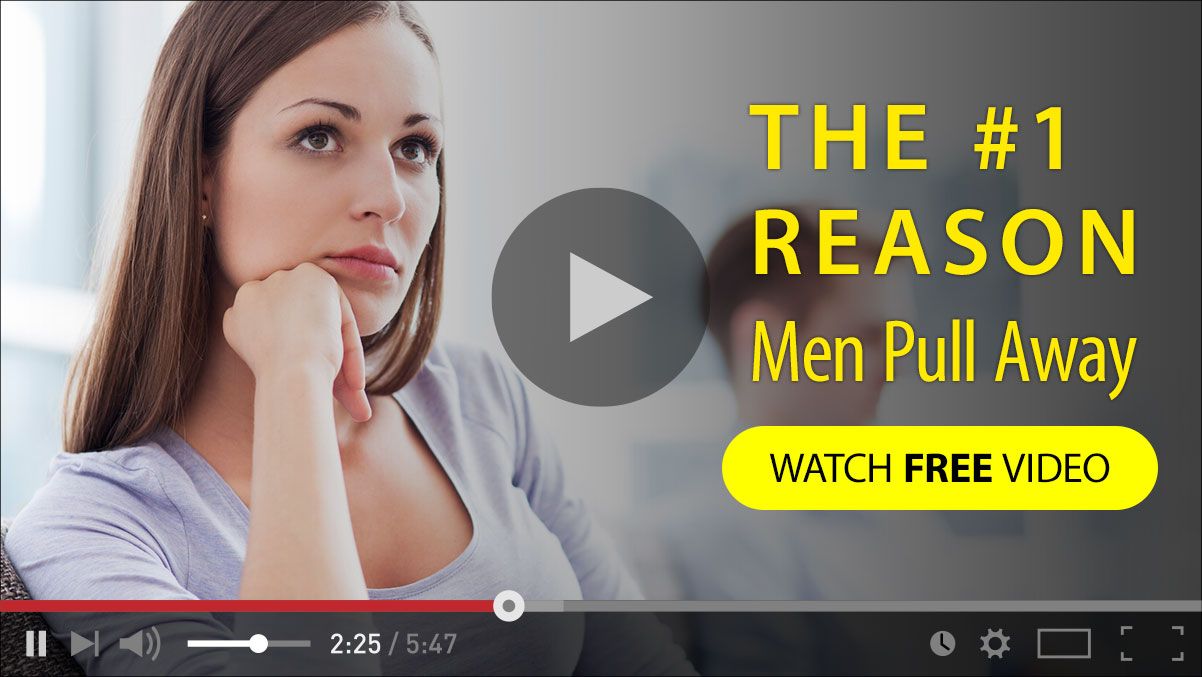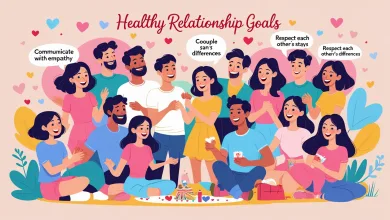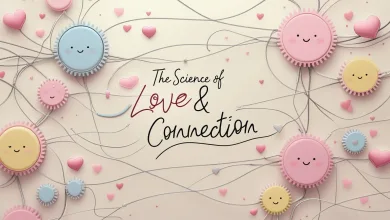Attachment Issues in Relationships: Breaking Free from Unhealthy Patterns

Our earliest bonds shape how we love as adults. If you’re stuck in a cycle of painful relationships or find yourself pushing away the very people you want close, attachment issues might be at the heart of your struggles. Let’s explore how these invisible patterns form and, more importantly, how to break free.
The Hidden Blueprint of Your Relationships
Have you ever wondered why you keep falling for the same type of person, even when it ends in heartbreak? Or maybe you’ve noticed that just when things get serious, you find reasons to bolt. Perhaps you’re constantly anxious about your partner’s feelings, sending midnight texts just to make sure they still care.
These patterns aren’t random. They’re often rooted in what psychologists call “attachment styles”—emotional blueprints formed in our earliest relationships that continue to influence how we connect with others throughout our lives. Understanding your attachment style is like finding the source code to your relationship patterns. It’s not about assigning blame—it’s about gaining insight that can lead to healing.
Attachment theory, first developed by John Bowlby and later expanded by Mary Ainsworth, suggests that the way our caregivers responded to our needs as infants and children shapes our expectations about relationships for years to come. This early programming runs deep, affecting everything from who we’re attracted to, how we communicate, and even our ability to maintain healthy boundaries.
The Four Attachment Styles Demystified
Research has identified four main attachment styles that develop in childhood and often persist into adulthood. Recognizing which pattern you tend to follow can be eye-opening—and the first step toward change.
Secure Attachment: The Foundation of Healthy Connection
Individuals with secure attachment generally had caregivers who were consistently responsive to their emotional needs. As adults, they’re comfortable with both intimacy and independence, can express their feelings appropriately, and tend to form stable, satisfying relationships.
A securely attached person might think: “I trust my partner, but I also know I’d be okay on my own. I can share my feelings openly without fear of abandonment or rejection.”
Secure attachment is associated with higher relationship satisfaction and better emotional regulation. It’s the gold standard we’re aiming for, but if you didn’t develop this pattern in childhood, don’t worry! Attachment styles can shift with awareness and intentional work.
Anxious Attachment: Forever Seeking Reassurance
If your caregivers were inconsistently responsive—sometimes attentive, sometimes not—you might have developed an anxious attachment style. As an adult, this often manifests as a deep fear of abandonment and rejection.
People with anxious attachment tend to:
- Seek constant reassurance from partners
- Worry excessively about their relationship status
- Feel intensely jealous or possessive
- Become overly dependent on partners for emotional regulation
- Interpret neutral actions as signs of waning interest
“I know my partner said they love me yesterday, but they took longer than usual to reply to my text today… are they losing interest?” This kind of thinking is exhausting—both for the anxiously attached person and their partner.
Research published in the Journal of Personality and Social Psychology found that individuals with anxious attachment often engage in behaviors that ironically push partners away, creating a self-fulfilling prophecy of the rejection they fear most.
Avoidant Attachment: Maintaining Emotional Distance
On the flip side, if your caregivers discouraged emotional expression or were consistently unresponsive to your needs, you might have developed an avoidant attachment style. This pattern is characterized by discomfort with closeness and a strong preference for emotional independence.
Signs of avoidant attachment include:
- Difficulty opening up emotionally
- Valuing self-sufficiency above all else
- Feeling suffocated when partners express neediness
- Tendency to focus on a partner’s flaws when things get serious
- Preferring to keep relationships casual or at arm’s length
“Everything was going great until they started talking about moving in together. Suddenly, I’m noticing how annoying their laugh is…” Sound familiar? This sudden shift in perception is often a defense mechanism to create emotional distance when things get too intimate.
Studies show that avoidantly attached individuals often suppress their emotions rather than process them, which can lead to increased physiological stress responses even when they appear calm on the surface.
Disorganized Attachment: When Relationships Feel Like Minefields
The most complex pattern is disorganized attachment (sometimes called fearful-avoidant), which typically develops when caregivers were frightening or unpredictable—perhaps due to addiction, untreated mental illness, or abusive behavior.
Adults with disorganized attachment often:
- Both crave and fear intimacy
- Have highly volatile relationships
- Struggle with emotional regulation
- Experience contradictory impulses (pursuing then rejecting partners)
- Have difficulty trusting others
“I desperately want connection, but as soon as I get close to someone, I’m overwhelmed with fear they’ll hurt me.” This internal conflict creates a push-pull dynamic that can be extraordinarily painful for everyone involved.
Research published in Development and Psychopathology indicates that disorganized attachment is associated with higher rates of relationship difficulties and mental health challenges, but therapeutic interventions can be particularly effective for this group.
How Attachment Issues Show Up in Your Relationships
Attachment patterns don’t just influence who we’re drawn to—they shape virtually every aspect of our relationship experiences. Here’s how these issues might be affecting your love life without you even realizing it:
The Dating Phase: Attraction or Familiar Pain?
Ever notice how you keep dating the same “type” even though it never works out? This isn’t just bad luck. Our attachment systems often steer us toward what feels familiar, even if it’s unhealthy.
Someone with anxious attachment might be unconsciously attracted to emotionally unavailable partners because the pursuit feels familiar—it recreates the inconsistent care they received in childhood. Similarly, an avoidant person might find themselves repeatedly drawn to clingy partners, creating a dynamic where they can reenact their role as the distant one.
“Chemistry” isn’t always a good sign. Sometimes what we experience as an irresistible pull toward someone is actually our attachment system recognizing a chance to replay old patterns. True compatibility, on the other hand, often feels less dramatic but more peaceful.
Communication Breakdowns: When Fear Drives the Conversation
Have you ever found yourself in a heated argument with your partner and suddenly realized you’re fighting about something completely different than when you started? Attachment triggers can hijack otherwise normal conversations.
For the anxiously attached, a partner’s request for space might trigger panic and desperate attempts to reconnect. For the avoidant, a partner’s need for emotional support might trigger withdrawal. And for those with disorganized attachment, these reactions might alternate unpredictably.
According to research in the Journal of Social and Personal Relationships, couples with mismatched attachment styles (particularly anxious-avoidant pairings) tend to experience more conflict and miscommunication. However, awareness of these patterns can help couples develop more effective communication strategies.
Conflict Resolution: Fighting to Win or Fighting to Connect?
How you handle disagreements reveals a lot about your attachment style. Securely attached individuals tend to approach conflict as a problem to solve together. They can express their needs without attacking and listen without becoming defensive.
In contrast, insecure attachment patterns lead to characteristic conflict styles:
- Anxious: Tends toward emotional escalation, bringing up past hurts, and making relationship threats (“If you really loved me, you wouldn’t…”)
- Avoidant: Tends toward stonewalling, changing the subject, or physically leaving during difficult conversations
- Disorganized: May swing between aggressive confrontation and complete shutdown
These strategies developed as survival mechanisms in childhood but rarely serve us well in adult relationships. The good news? With practice and awareness, we can learn new approaches to conflict that promote connection rather than division.
Breaking Free: Healing Attachment Wounds
Alright, so you’ve identified some attachment patterns that might be holding you back. Now what? Here’s the hopeful truth: while attachment styles tend to be stable, they’re not set in stone. With self-awareness, commitment, and often some professional guidance, you can develop a more secure approach to relationships.
The Journey Begins with Awareness
The simple act of recognizing your attachment patterns is powerful. When you can pause during a triggered moment and think, “This is my anxious attachment speaking, not reality,” you create space for choice rather than automatic reaction.
Start by observing your thoughts, feelings, and behaviors in relationships without judgment. Notice your typical responses to:
- When a partner needs space
- When a relationship starts to deepen
- During conflict or disagreement
- When you feel vulnerable or hurt
Journaling about these patterns can be incredibly illuminating. You might notice themes emerging that point clearly to one attachment style or another.
Healing Through Relationships
While past relationships may have wounded you, current ones can be a powerful vehicle for healing. Psychologist Dr. Sue Johnson, developer of Emotionally Focused Therapy, describes secure relationships as providing a “secure base” from which we can grow and explore the world.
If you’re fortunate enough to have a partner willing to understand attachment theory alongside you, you can:
- Identify each other’s attachment triggers and develop plans for handling them
- Practice clear communication about needs and boundaries
- Create “repair rituals” for when attachment injuries occur
- Gradually test new, more secure ways of relating
Remember, the goal isn’t perfect communication or never getting triggered—it’s developing the capacity to return to connection after inevitable ruptures.
The Role of Therapy in Attachment Healing
For many people, especially those with significant attachment trauma, professional support is invaluable in this journey. Several therapeutic approaches have shown particular promise for healing attachment issues:
- Emotionally Focused Therapy (EFT) helps couples identify and transform negative interaction patterns
- Schema Therapy addresses early maladaptive schemas that influence attachment
- Internal Family Systems (IFS) works with the different “parts” of ourselves that carry attachment wounds
- EMDR (Eye Movement Desensitization and Reprocessing) can help process traumatic memories that reinforce insecure attachment
Research published in the Journal of Marital and Family Therapy found that EFT significantly improved relationship satisfaction in 70-75% of couples, with results typically maintaining at follow-up.
Self-Compassion: The Foundation of Healing
Perhaps the most important element in healing attachment wounds is developing self-compassion. Many of us are extremely harsh with ourselves about relationship struggles, which only reinforces insecure attachment.
Instead of thinking, “What’s wrong with me? Why can’t I just be normal in relationships?” try, “It makes perfect sense that I developed these patterns based on my experiences. I’m doing the best I can, and I’m committed to growing.”
Research by Dr. Kristin Neff has shown that self-compassion is strongly linked to psychological well-being and resilience in the face of challenges—exactly what’s needed for attachment healing.
Practical Strategies for Each Attachment Style
Healing looks different depending on your primary attachment pattern. Here are some tailored strategies:
For Anxious Attachment:
- Develop self-soothing techniques. Learn to calm your own attachment system through mindfulness, deep breathing, or physical exercise rather than seeking reassurance from others.
- Challenge catastrophic thinking. When you’re spinning worst-case scenarios about your relationship, ask yourself: “Is this thought based on evidence or fear? What’s a more balanced perspective?”
- Build a support network. Avoid placing all your emotional needs on one person by nurturing friendships and family connections.
- Practice tolerating uncertainty. Start with small exposures to uncertainty (like waiting an hour to text back) and gradually build your capacity.
For Avoidant Attachment:
- Practice emotional awareness. Develop the habit of checking in with your feelings regularly, perhaps through journaling or meditation.
- Take small steps toward vulnerability. Share something slightly uncomfortable, then something a bit more personal, gradually building your tolerance for emotional intimacy.
- Stay physically present during difficult conversations. If you notice the urge to leave or shut down, commit to remaining engaged even if you need to briefly pause.
- Explore your fear of dependence. Often avoidant attachment masks a deep fear that needs won’t be met. Working with these core beliefs can be transformative.
For Disorganized Attachment:
- Prioritize stability and consistency. Create predictable routines in your life to help your nervous system learn that safety is possible.
- Work with a trauma-informed therapist. The complexity of disorganized attachment often benefits from professional support.
- Practice naming contradictory impulses. “Part of me wants to get closer to my partner, and part of me is terrified of being hurt. Both parts make sense given my history.”
- Focus on emotional regulation skills. Tools like dialectical behavior therapy (DBT) can help manage the intense emotional swings common with this attachment style.
Common Questions About Attachment Issues
Can my attachment style change over time?
Yes, absolutely! While attachment patterns tend to be stable, research shows they can change through significant relationships, therapy, and intentional personal growth. A longitudinal study published in Child Development found that while early attachment experiences are influential, later relationships can lead to “earned security”—essentially developing secure attachment despite early insecure patterns.
Do I have to have experienced trauma to have attachment issues?
Not necessarily. While severe attachment issues are often linked to trauma, even subtle, well-intentioned parenting approaches can contribute to insecure attachment. For example, parents who consistently discouraged emotional expression might have been trying to help their children be “strong,” but inadvertently fostered avoidant attachment patterns.
Can people with different attachment styles have successful relationships?
Absolutely! While mismatched attachment styles (particularly the anxious-avoidant trap) can create challenges, awareness and communication can help couples navigate these differences. Sometimes these relationships even offer unique opportunities for growth, as each partner can help the other develop aspects of security they struggle with.
How long does it take to heal attachment issues?
There’s no one-size-fits-all timeline for healing. Some people experience significant shifts within months of focused work, while for others—especially those with complex trauma histories—it’s more of a lifelong journey. The good news is that even small shifts toward security can dramatically improve relationship satisfaction.
Can I have different attachment styles in different relationships?
Yes! While most people have a dominant attachment style, we can show different patterns in different relationships. For instance, someone might be relatively secure with friends but anxious in romantic relationships, or avoidant with family but secure at work. Context matters, and our attachment system responds to the specific history we have with each person.
Moving Forward: Beyond Attachment Patterns
As we wrap up our exploration of attachment issues in relationships, I want to leave you with this empowering thought: while your past experiences have shaped your attachment style, they don’t have to determine your future relationships.
The journey toward secure attachment isn’t about becoming a different person—it’s about becoming more fully yourself. It’s about shedding the protective strategies that once helped you survive but now limit your capacity for connection. It’s about discovering that you can be both vulnerable and safe, both independent and intimately connected.
This journey isn’t linear, and it isn’t always easy. There will be setbacks and moments when old patterns reassert themselves. But with each small step—each time you choose awareness over autopilot, compassion over criticism, courage over comfort—you’re rewriting your attachment story.
And perhaps most importantly, remember that you’re not alone in this struggle. Attachment issues are profoundly human, touching all of us in some way. In working to heal your own attachment wounds, you’re participating in a much larger journey toward more connected, authentic relationships for everyone.






